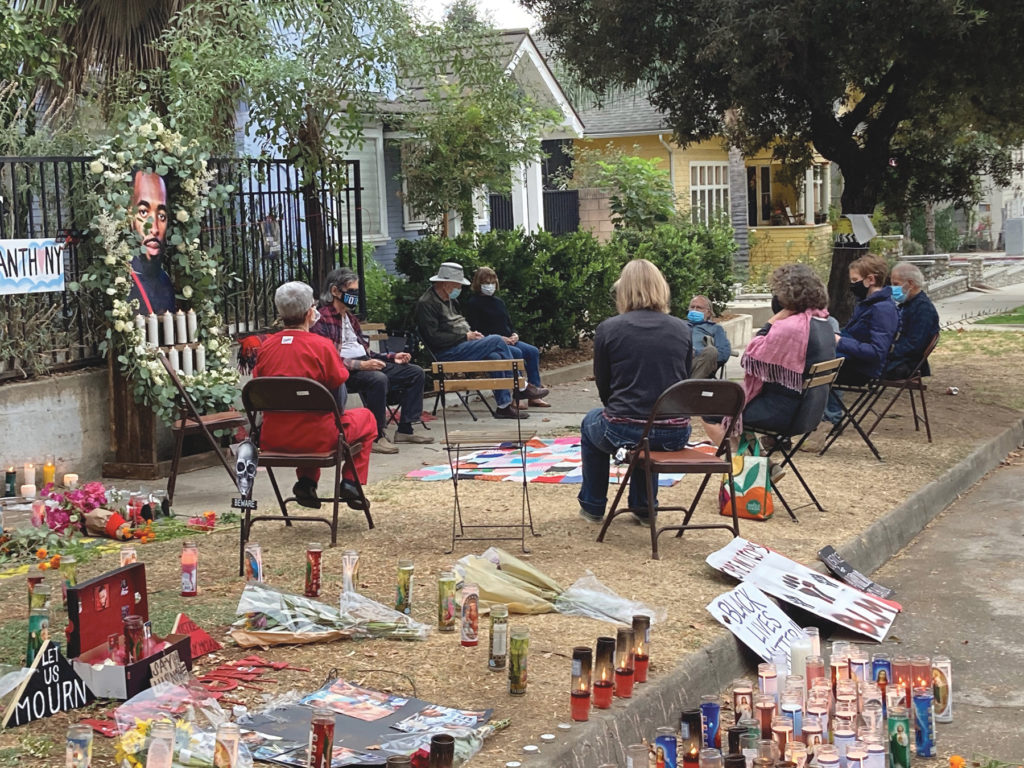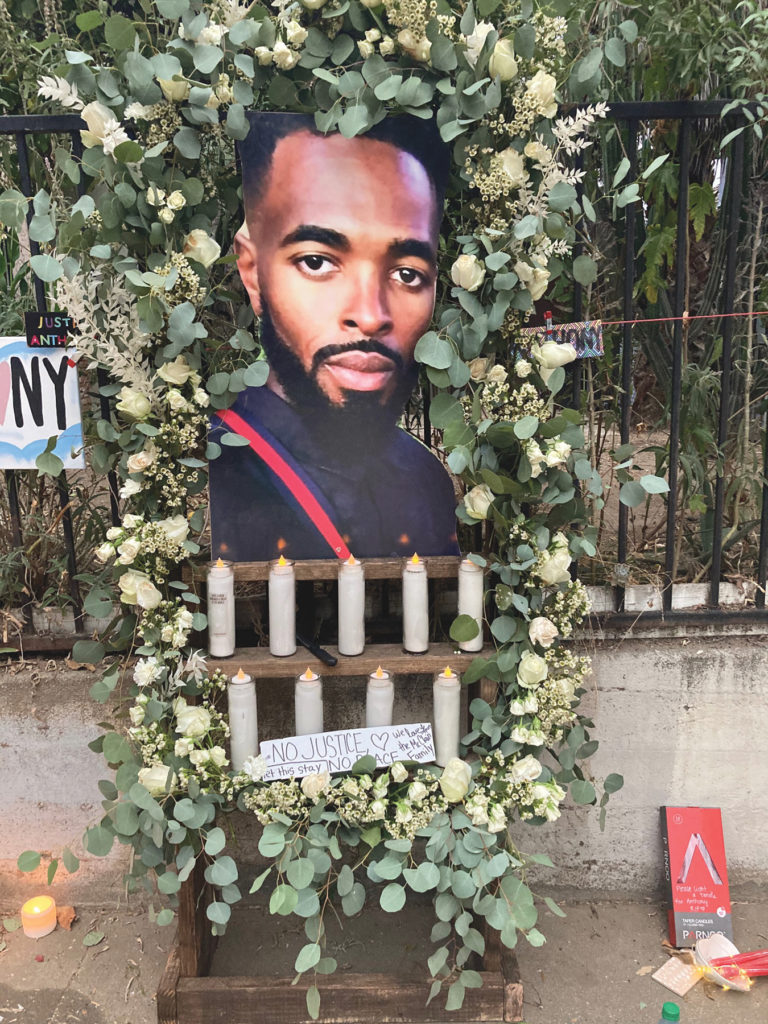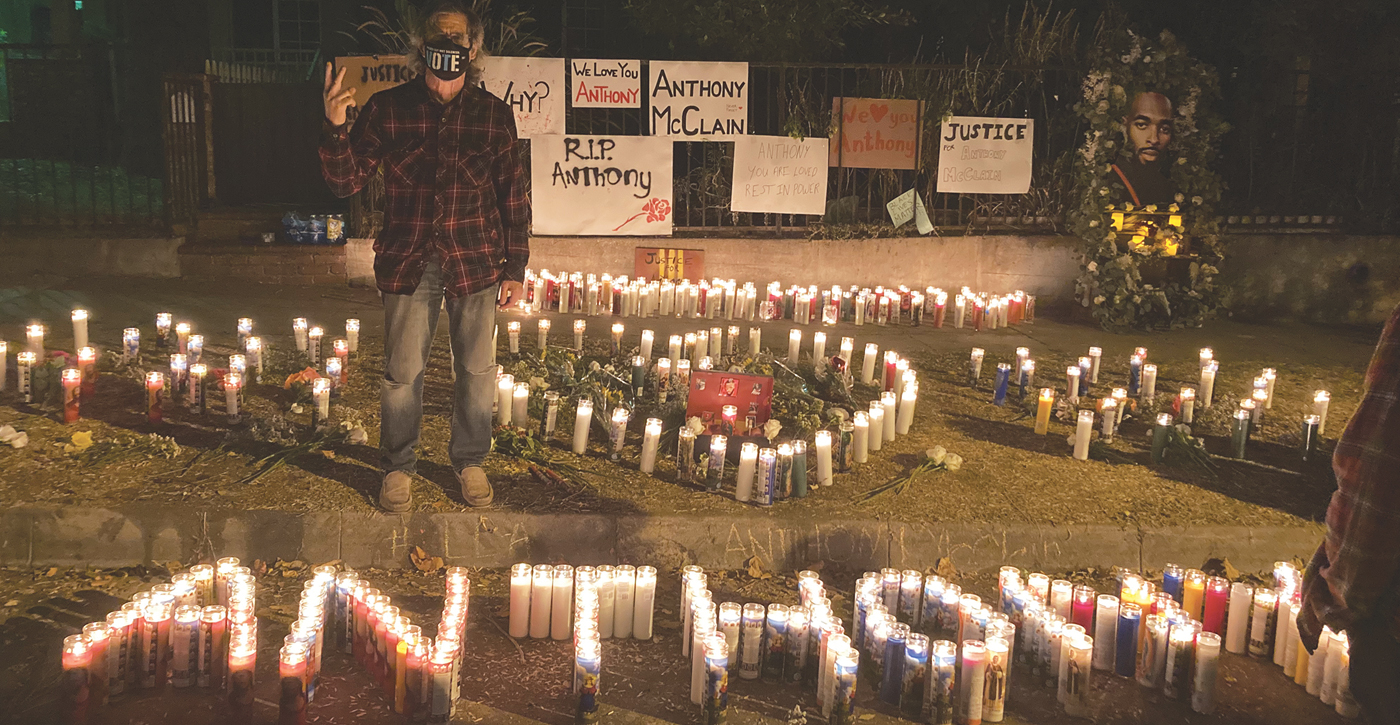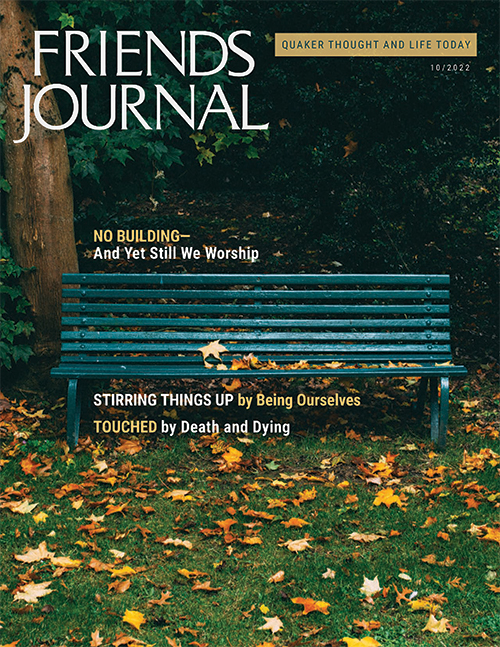A White Quaker’s Approach to Racial Justice
When my wife, Jill, and I returned to Pasadena, California, from our summer vacation in 2020, we learned some shocking but not surprising news: on August 15, a 32-year-old Black man, a father of three, had been shot and killed by Pasadena police not far from our home. My wife and I are both White, and we live in what used to be the red-lined, predominantly African American section of Pasadena, where police killings and beatings of African American men happen every few years. In the past ten years, we have grieved the deaths of Kendrec McDade, an unarmed 19-year-old Black youth shot seven times by police, and Reginald Thomas Jr., a father of eight, tasered to death by police in the middle of the night when he had a mental health crisis and his family called for help. We also witnessed (via video) the savage beating of Christopher Ballew for having tinted windows on his car. At each of these events, the community rallied, prayed, and protested, and we joined them to “say his name,” grieve, and call for justice. We even organized a special memorial service for McDade at the site where he was killed. With his mother, Anya Slaughter, and his family and friends leading the way in worshipful silence, a deeply moving worship service took place on Palm Sunday in which sacred dancers reenacted the death and resurrection of Jesus. A pastor poignantly compared Kendrec’s suffering to Jesus’s.
McDade was a college student with no criminal record. The police who killed him were exonerated because they were told that an armed Black man had stolen a laptop. When they found McDade walking alone several blocks from the crime scene, the police shot and killed him without warning. The police made a deadly mistake, based on implicit bias, but suffered no consequences.

A group of Orange Grove Friends worship at the memorial in October 2020.
The murder of Anthony McClain hit our community especially hard because it took place next to La Pintoresca Park, which is frequented mainly by our African American neighbors, who witnessed what happened firsthand. At around 8:00 p.m., just as dusk was settling in, McClain and his friend were stopped by police for what’s often called a DWB, “driving while Black.” The police questioned McClain’s friend who had an expired driver’s license. When McClain was asked to leave the car, he panicked and ran. An officer shot him in the back while running away. Fatally wounded, McClain continued running toward the park, fell onto the parkway, and bled out. Witnesses say that one of the police pressed his knee on McClain’s back and neck as he handcuffed him, hastening his death. The police claimed McClain was carrying a gun. A “ghost” gun was allegedly found near the site, but it is unclear whether it belonged to McClain or was planted by police. What is clear is that McClain did not threaten anyone with a weapon.
As is the custom in such cases, the community created a touching memorial for Anthony: a large picture surrounded with candles, expressions of sympathy, and calls for justice. Black Lives Matter and local religious leaders joined forces in calling for justice. I often went there to pray, either alone or with Jill. On many occasions, I encountered Kerwin Manning, an African American pastor whose congregation meets only a block away from our home. We sometimes attend services there and have become friends with him and some of the church members.
Anthony’s memorial became a sacred place. People of faith often come there to pray and bring flowers. I prayed there with a group of young Evangelical Christians, and it was a powerful experience, even though their style of worship is very different from my own Quaker tradition. It occurred to me: why not have a Quaker worship service at this site?
I floated this idea with our Peace and Social Concerns Committee and received unanimous and enthusiastic support. We invited members of Pasadena’s Orange Grove Meeting to join us, and 12 or so took part. We set up chairs next to the memorial and sat in silence. A Black woman joined us. She sat on the curb and was accompanied by one of our group who listened compassionately as this woman shared her painful struggles. After the worship service, I met a young mother named Esprit Jones who lived next door to the memorial and tended it. She had seen Anthony bleed out on the parkway, and it fired her up to do something about it.
I was encouraged and inspired by Esprit’s passion for justice, and we have since become friends. It has been wonderful to see her develop as a community leader committed to racial justice.
Orange Grove Meeting is located in the heart of the Latinx and African American part of our city, but most of its members live far away, in more affluent communities like San Marino, Highland Park, Altadena, and Arcadia. The area adjacent to the meetinghouse is mainly Latinx, with a median family income of $25,000. Jill and I are among the very few Friends who live in the “hood,” where the meetinghouse is located, and we have encouraged Friends to get to know their neighbors. We’ve taken them on walks around the neighborhood, and they appreciated getting to know their neighborhood better.
Our meeting has one longtime African American member, Michelle White, who has been calling for racial and social justice for decades. I’ve known Michelle for over 20 years, and she knew my wife long before we met ten years ago at the Palm Sunday Peace Parade here in Pasadena. Michelle and Jill met at American Friends Service Committee’s office around 2000 where they became involved in housing justice work. Jill regards Michelle as her mentor, as well as her friend. Michelle is brilliant: trained as an attorney, she runs an affordable housing nonprofit and is deeply committed to police accountability.
After the murder of George Floyd in 2020 in Minneapolis, Minnesota, and our own Anthony McClain, we worked together on a minute of concern on racial justice, which was approved by our meeting. Along with many others, we also advocated for police accountability. After the death of McClain, the city council fast-tracked a police commission and an independent police auditor: something we had been promoting for many years. Unfortunately, now that it is in place, we realize it has little power to create change and can’t even discuss personnel issues! After a year of tireless advocacy, the police still maintain that the killing was justified. As the investigation drags on, California State Senator Anthony Portantino sponsored a bill specifically tailored to expedite cases like this, and my African American city councilmember repeatedly calls for action, but the council refuses to admit wrongdoing or take action, even though a $7.5 million settlement was provided for McClain’s three children. Each week, members of Black Lives Matter call for the firing of the city manager and police chief, who have both decided to retire early, and the officers who killed Anthony McClain, who are still on the beat.
When my wife, Jill, first moved to Pasadena to attend Fuller Seminary, she met John Perkins, a visionary African American leader who started both Harambee Ministries in northwest Pasadena and a nationwide organization called Christian Community Development Association. Following Perkins’s teaching, Jill intentionally moved into this largely Black neighborhood known for gang violence and drug use. The neighborhood improved, but it also became gentrified. A quarter of the African American community has been displaced from the city due to gentrification. This led Jill to become involved with housing justice work, which is closely related to racial justice.
What I learned from Jill’s racial justice work is the importance of long-term commitment: it’s all about relationships. We show up consistently at the annual Martin Luther King Jr. event at a Black Baptist church; we show up at the Black history parade; we show up at rallies; we show up at funerals of prominent African Americans in our city. Little by little, we have gotten to know our African American neighbors and they have gotten to know us. This is how friendships are formed.
Since 9/11, I have been led to interfaith peacemaking and have attended almost every mode of worship imaginable: Buddhist, Muslim, Bahai, as well as diverse Christian churches. I have learned not to judge but to assume the attitude of a guest and learner. Over the last ten years of showing up at Black churches, I have learned more than words can tell. I am moved by the choirs, the passionate preaching, and the deep commitment to prayer. I find it liberating to be in a community that praises God and Jesus wholeheartedly and expresses emotion freely and powerfully—elements that are often lacking in our unprogrammed Quaker worship. After these intense experiences, however, I return to Quaker worship with a deeper appreciation of our contemplative silence, our practice of listening for the “still, small voice,” and our prophetic tradition that gives everyone a chance to speak their truth as Spirit leads.

The shrine at the center of the memorial to Anthony McClain.
On August 15 of last year, Jill and I showed up at Pintoresca Park for a memorial service for Anthony McClain. It was a joyous as well as solemn occasion, with singing and dancing and a great jazz band called Salty Chips. Pastor Manning gave one of the most powerful social justice messages I’ve heard preached in our city.
One of the members of his church is a dear friend, and she encouraged me to share a poem I wrote about Anthony McClain. I decided to do so during the public comment time at our Pasadena City Council meeting the following day. I shared this poem, which came to me like vocal ministry:
In Memory of Anthony McClain
Anthony, I say your name and it troubles me.
Your name is also mine. Same name,
Same God, same neighborhood,
Yet how different our lives became!
You died a young man, a father of three,
shot in the back by men in blue,
Running for your life, all your life,
Because of the color of your skin
And America’s original sin.
I am old and privileged and white
And I ride my electric bike
To the place where your precious blood
Spilled onto the parkway needlessly.
Because your death grieves me.
I go to this place as often as I’m able.
I’m saddened, yet I’m comforted to see
This place made lovely
by your friends and family.
Your picture with candles and flowers, like an icon.
Like a beacon,
Perennials planted where your blood flowed free
Proclaiming to all with eyes to see:
You were loved, you mattered, you aren’t
forgotten utterly.
I want to say your name again: Anthony.
I feel somehow that we’re connected inextricably
By the one who calls us to do justice and love mercy,
And say his name, his precious name, gratefully. . . .
I called on the council members to hold McClain’s family in their prayers. Immediately after I shared this poem, I received this text from Pastor Manning:
My brother, my brother! That poem was powerful and poignant! I might have preached yesterday but YOU just preached tonight!!!! Soooo proud of you, my brother. Pastor Kerwin.
I was deeply touched by this heartfelt response. I feel grateful to be part of the Beloved Community in our city that is working for racial justice. I have learned that justice is not an abstract word: it is a long-term commitment, like marriage or friendship. As Cornel West said, “Justice is what love looks like in public.” I hope that we as Friends can take these words to heart and reach out to our African American brothers and sisters in the spirit of love. To me, that’s what it means to be a Friend.




Can you imagine what it was like in the ’30s ’40s and ’50s? I am 84 and over 5000 black folks were lynched in MY lifetime. There is a very moving memorial in Birmingham, Alabama. I would like to see it travel all over like the Vietnam wall.
I was influenced by Barbara and Earl Reynolds who were the parents of my friend, Tim Renolds when we lived near Hiroshima after the bomb. They (converted Friends) sailed “The Dove” worldwide and into atomic bomb testing sites.
I grew upunder Jim Crow as a Southerner,but I naively thought we were farther along,until the horror and tragedy of 2017 ensued.
As overwhelming as racism seems when it rears its ugly head, we can’t afford anything except to pledge eradicating it wholly and permanently.
I was so appalled by the author’s description of the killing of Kendrec McDade that I went searching for more information online. I am sympathetic with the author’s point of view regarding racial injustice and the lack of consequences for police murders. However, from what I can find, it is not accurate, or at the very least misleading, to state that “When they found McDade walking alone several blocks from the crime scene, the police shot and killed him without warning.”
While it is undeniable that “the police made a deadly mistake,” it also appears that the crime victim’s false report of an armed robbery (when there were in fact no weapons involved) likely played a key role in their decision-making. Personally I am inclined to believe that their choices were “based on implicit bias” as well, but I don’t think it serves anyone’s cause to obfuscate the circumstances of Kendrec’s murder. For example, it also seems relevant that he had committed the crime in question and that he ran when confronted by the police; even so we can and should point out that none of that is a capital offense nor justifies his murder.
Friends who are interested in more details may want to read the independent report that was finally released to the public as result of his mother’s suit. It was written by the Office of Independent Review, a private consulting group, and delves into the shooting as well as the city’s own internal investigation of the incident. https://www.documentcloud.org/documents/2515384-redacted-oir-report-approved-for-release-in.html